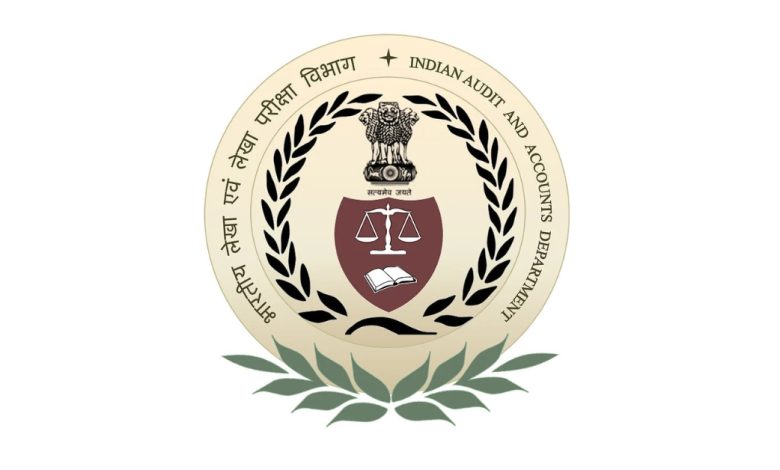Daily Current Affairs for UPSC
One Indian Audit & Accounts Department One System (OIOS)
Syllabus- Constitutional Bodies [GS Paper-2]

Context- Girish Chandra Murmu, the Comptroller and Auditor General of India (CAG), announced that the One Indian Audit & Accounts Department One System (OIOS), a web-enabled IT application with offline functionality, support for multiple languages, and a mobile app, would be fully operational for the digitalization of the audit procedure beginning on April 1, 2023.
Key Highlights
- The CAG of India stated that starting all new audit work would only be done through the application, and that physical paper-based workflow would end.
- The Defense Audit offices, the only exception, would require additional time due to security concerns.
- In 2019, efforts to implement the IT application began.
- Master data, audit design, audit execution, legacy data migration, knowledge management system, quality assurance/quality control, audit products, communication, and follow-up were all part of the OIOS rollout process.
How will the system run?
- Any organizational change was hard to manage, especially in the Indian Audit & Accounts Department (IAAD), which had about 25,000 employees in 150 audit offices across the country.
- The creation of functional help desks was an important part of the change management effort.
- Also 24 dynamic Senior Audit Officers/Assistant Audit Officers were entrusted with the sole responsibility of providing training, problem resolution, and assistance to various field offices.
- The IAAD would also need to clearly state its vision for the next 25 years in this regard, as digitalization was transforming the entire nation, bringing transparency, efficiency, ease of living, and governance to the doorstep of every individual.
- The chief of CAG set the goal of developing capabilities to harness the potential of new and emerging IT fields like artificial intelligence and machine learning for audit purposes as a mid-term goal over the next five to seven years.
About CAG
-
- Constitutional Body: A CAG office that is independent is established by Article 148. It is India’s highest auditing institution.
- Other CAG-related provisions include:
- Articles 149-151 (Duties and Powers),
- Article 279 (Calculation of Net Proceeds, etc.), and
- Article 279 (Form of Union and State Accounts and Audit Reports) and
- the Sixth Schedule (Administration of Tribal Areas in the States of Assam, Meghalaya, Tripura, and Mizoram), as well as the
- Third Schedule (Oath or Affirmation).
- Brief Biography:
-
- Head of the Indian Audit and Accounts Department established in 1753.
- Guardian of the public purse and in charge of the entire country’s financial system at both the central and state levels.
- It is one of the foundations upon which India’s democratic government is built.
- The Union Public Service Commission, the Election Commission, and the Supreme Court are the others.
- The responsibility of the executive (for example Chamber of Clergymen) to the Parliament in the circle of monetary organization is obtained through review reports of the CAG.
- Appointment: Designated by the Leader of India by a warrant under his hand and seal.
- Tenure: either six years or until the age of 65, whichever comes first.
- Removal: CAG can be taken out by the President on similar grounds and in a similar way as an adjudicator of the High Court. He holds his position only at the President’s pleasure.
- To put it another way, he can be removed from office by the President on the basis of a resolution that was passed with a special majority by both Houses of Parliament, either on the basis of demonstrated misconduct or incapacity.
Other Points to Consider:
-
- After he leaves office, he is not eligible for any other office, either under the Indian government or in any state.
- The Parliament sets salaries and other conditions of employment.
- The Consolidated Fund of India covers the CAG’s administrative costs, which do not require a vote from Parliament because they include the salaries, allowances, and pensions of all CAG employees.
- The CAG cannot be represented in Parliament by a minister.
- Under the CAG’s (Duties, Powers, and Conditions of Service) Act of 1971, duties and powers include:
-
-
- examines the accounts for all expenditures made from the Consolidated Fund of India, each state’s consolidated fund, and each union territory’s consolidated fund with a Legislative Assembly.
- checks all expenditures made from India’s contingency fund and public account, as well as each state’s contingency fund and public account.
- checks the balance sheets, profit and loss accounts, and other subsidiary accounts that any department of the Central Government and state governments keeps.
- examines the spending and receipts of the following:
- Bodies and authorities substantially financed from the Central or state revenues;
- Government companies; and
- Other corporations and bodies, when so required by related laws.
- Whenever the President or Governor requests, he audits the accounts of any other authority. Take, for instance, the local body audit.
- serves as a philosopher, friend, and guide to the Parliament’s Public Accounts Committee.
-
- Limitation:
-
- The CAG is envisioned as both the Comptroller General and the Auditor General under the Indian Constitution. Nonetheless, by and by, the CAG is satisfying the job of an Inspector General just and not that of a Representative.
- To put it another way, the CAG does not have any influence over the distribution of funds from the consolidated fund, and many departments are permitted to draw funds by issuing checks without the CAG’s explicit permission; the CAG is only concerned at the audit stage when the expenditure has already occurred.
- In this regard, India’s CAG is completely distinct from Britain’s CAG, which possesses both Comptroller and Auditor General powers.
- To put it another way, only with the CAG’s approval can the executive in Britain take money from the public coffers.





.png)



